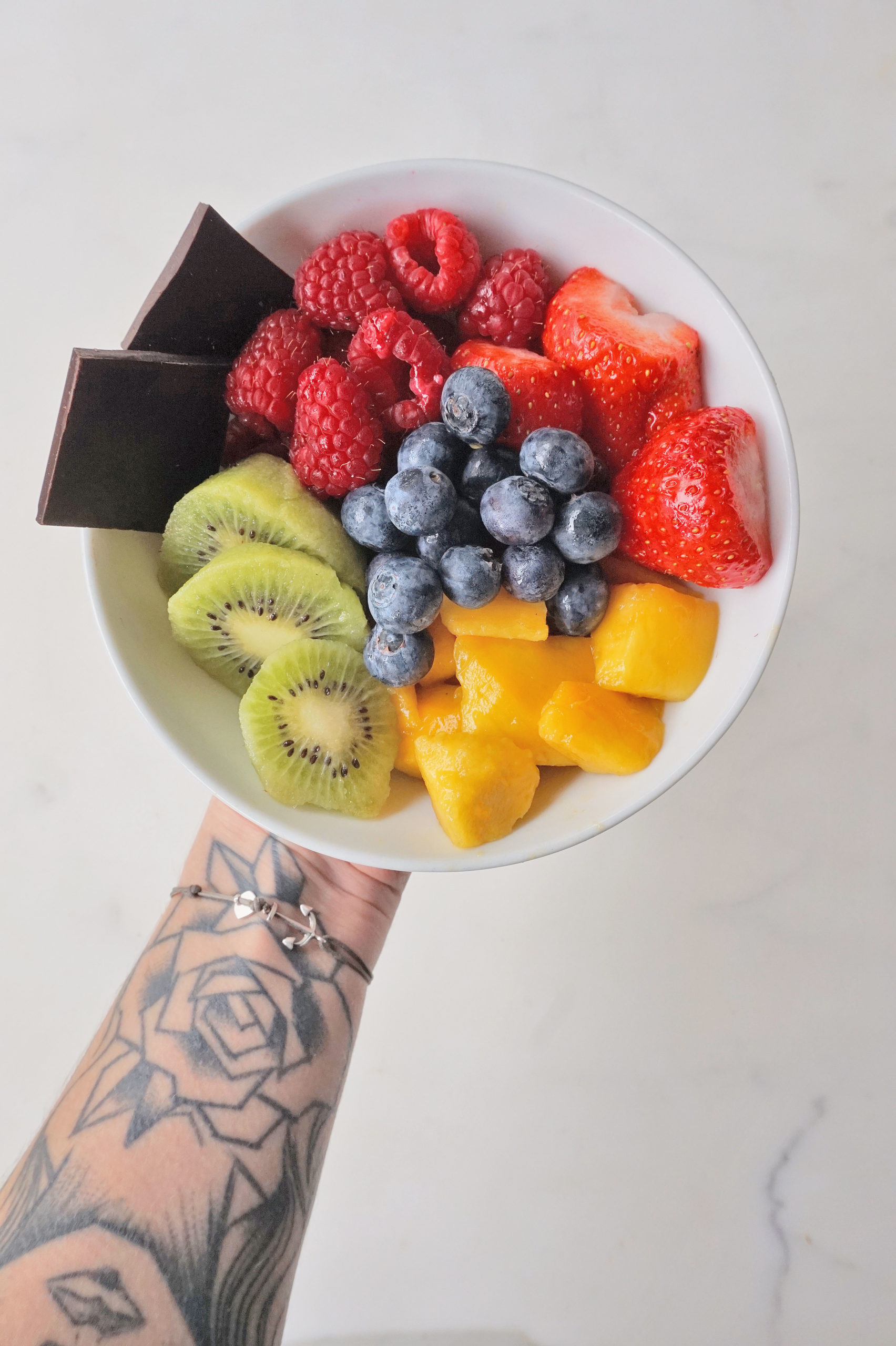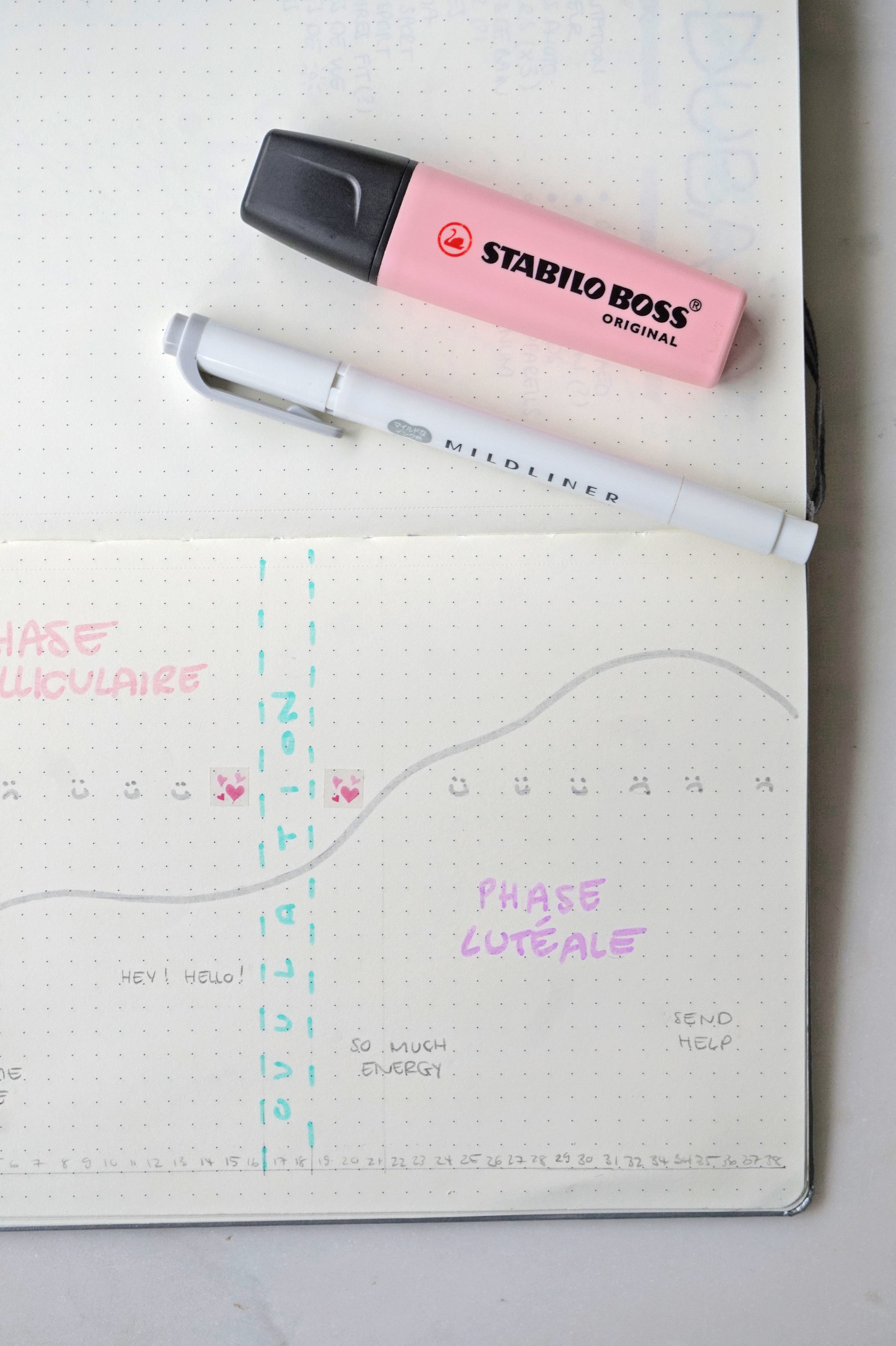This post is all about the luteal phase : How to calculate it, when it happens, how it affects your mood and body and so much more.
But before we cover this topic, make sure to read my article about the follicular phase first.
What is the luteal phase?
The luteal phase starts right after ovulation and ends when periods arrive. It lasts between 11 and 17 days. Below, it’s considered short.
A short follicular phase is usually the sign of low progesterone. This can come from PCOS, obesity, anorexia, stress, or an unhealthy lifestyle.
As a consequence, a deficit in progesterone can lead to difficulties in getting or remaining pregnant.
As you may already know, I’m always looking for natural ways for our women’s problems. In this case, vitamin C could be your ally.
A study found that women taking vitamin C daily considerably increased their progesterone levels.
Ahhh I love these studies.
So if your luteal phase is short, make sure to eat loads of yellow bell peppers, oranges, broccoli, kiwi, and kale.
How does the luteal phase affect your body and mood
The luteal phase arrives just before your periods… which means that’s also when PMS starts showing off.
Being sad, bloated, hungry, crampy, and tired for no reason is common and normal during this period. We owe this to our dear progesterone.
In my article about the 4 phases of the menstrual cycle, I explain that the luteal phase is related to the fall season.
It’s pretty much the moment you refocus on yourself after summer (in this case, ovulation).
The good news is, having a healthy lifestyle helps to treat these not-so-cool symptoms. Read until the end to learn how to optimize this phase!
Luteal phase : How to calculate it
If you know how the fertility awareness method works, you know that your basal temperature and cervical mucus change throughout your cycle.
I wrote an article about this incredible natural birth control method if you want to learn more about it.
The great thing is that by getting to understand your body, you’ll know what’s happening in your cycle at any time.
1. Temperature and cervical mucus
During the luteal phase, your basal temperature will be at its highest (36,60°/97,88°F and above).
Cervical mucus is usually thick or inexistent when approaching the end of the cycle. This is what will prevent sperm to enter the uterus (like in the follicular phase).
Noticing these changes in your temperature + cervical mucus will inform you that ovulation just happened.
That means that you can’t predict in advance when the luteal phase will happen. And btw, that’s also why you shouldn’t be using cycle tracking apps to prevent pregnancy.
Does the luteal phase happen at the same time every month?
As regular as your cycle is, each phase could start and end at different times in the same woman. This is because the cycle is sensitive to our diet, stress levels, and wellness in general.
So yes, a lot of generalization is made. We tend to hear that ovulation happens on day 14 and that a normal cycle lasts 28 days.
Reality is, these are only vague averages. Remember that everybody is different and that the only thing you can rely on is knowing YOUR body and cycle.
For this, I could only recommend the fertility awareness method. There are many books you can learn from, but the most popular one is Taking Charge of Your Fertility.
Can I get pregnant during the luteal phase?
Chances are very low.
If your hormones are balanced and you don’t have any issues with your cycle, there’s no risk of getting pregnant when quitting the fertile window.
How to optimize the last phase of your cycle
If you’re a loyal reader to my blog, first: thank you <3. Second, you probably know that to me, nutrition and wellness are the best forms of medicine.
Since the luteal phase announces the beginning of problems, there’s room for improvement.
1. Watch your diet
This phase is characterized by a peak of hormones that favors cravings, water retention, bloating, and PMS.
The aim here will be to support your hormones and reduce the stress that feeds these symptoms.
If you crave carbs during this phase, focus on whole wheat, fruit, and chocolate which is rich in magnesium.
Related post: Magnesium, an ally for women and their menstrual cycle

During this phase:
- Favor foods rich in magnesium (dark chocolate, spinach, whole wheat) which helps to relax the muscles, and among others, your uterus
- Consume foods that stimulate serotonin production which helps to reduce stress, bad mood, and cravings (quinoa, leafy greens, and buckwheat).
- Eat rich in omega 3s foods to reduce inflammation (fatty fish, nuts, avocado).
- Replace simple carbs with oats, sweet potatoes, and legumes to balance sugar levels affected by the hormone peak
- Limit stimulants + inflammatory foods to prevent bloating and cramping (dairy, alcohol, coffee, refined sugar).
Oh, and even though I recommend eating healthy during this phase, no need to deprive yourself of allll the foods you love. A burger or lasagna once in a while isn’t a big deal (-;
2. Refocus on yourself
During the luteal phase, you might notice that you need to spend time alone or check in with yourself.
This makes the perfect moment to take decisions, make changes and listen to your needs.
Yes, listening to your body is a way of managing your mental and physical stress too.
3. Keep a healthy lifestyle
Since the luteal phase comes before your periods, it has a big influence on your next menstruations.
So make sure to exercise, manage your stress, and drink enough water during this phase.

I hope you learned something about your luteal phase : how to calculate, why it affects your mood or how to optimize it. If you have any questions, feel free te leave them in the comments below!



0 Comments